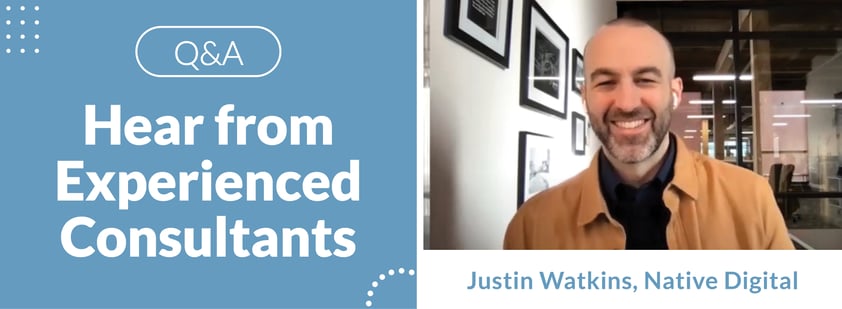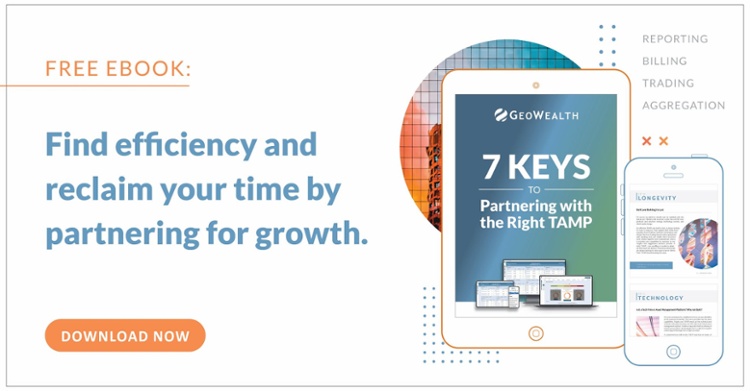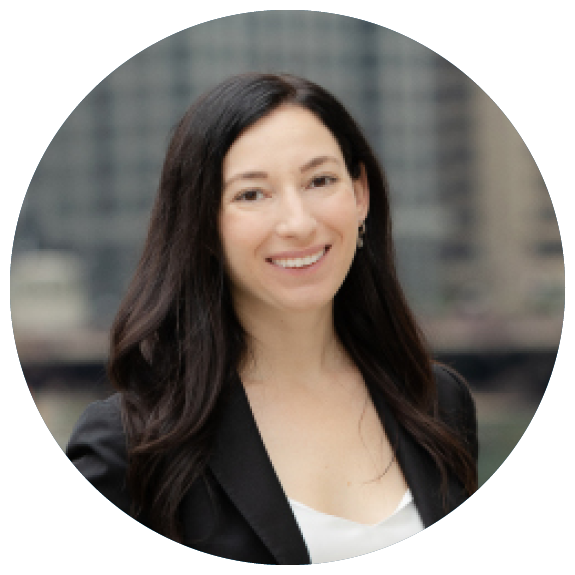
Welcome to the GeoWealth Consultant Series! Each article will highlight a consultant, coach, or organization focused on helping independent advisors improve practice management, accelerate success, and drive growth for their business.
Native Digital
Today, we’re joined by Justin Watkins, CEO & Founder of Native Digital. For over 20 years, Justin has married strategic messaging with performance marketing, with roles spanning interaction design, branding, and digital marketing.
Eight years ago, he founded Native Digital, which in that time has grown into a 36-person team helping fintech and finance brands (and other industries) solve brand messaging and performance marketing challenges. Ultimately, they help brands build name recognition and acquire new customers.

Let’s get to the Q&A!
Q: Tell us about Native Digital and the finance brands you serve.
Justin: We work with a number of finance brands, including banks and advisors, fintechs, and capital groups – even the Federal Reserve – to optimize brand messaging and performance media. Our niche is enterprises that need help refining their messaging and positioning which leads to digital marketing campaign execution and optimization.
We’re helping clients understand first how to express their value proposition in the context of the customer journey, in such a way that spurs action to the next valuable step, and then prove what they’re doing is working through data and attribution modeling. It all starts with the customer, with the audience. No brand can be successful without understanding their target audience’s challenges and where the brand itself fits into solving them.
Q: How do you help the firms you work with think about their brands?
Justin: The first step is acknowledging there’s a sea of sameness and a lot of parity. Brands can’t be timid about the way they present themselves to the market.
Sometimes the product offering is unique and innovative enough that we can orient everything around that position. Especially if it’s ownable and defensible. If the product offering is pretty similar to what’s on the market already, we look for the best way to stake a claim in something that represents the brand. We distill who they are into something sharp and focused.
Working with large organizations, for example, can be challenging because they could be 30 different things at the same time. Our job is to look at those 30 and say “Okay, five of those are aspirational or too applicable to your competitors that do them better. Ten of the others you may think are important, but your buyer doesn’t.” Then, we get the list down to three, and we include frontline staff in our work to make sure those are the right three things. Eventually we have to say “No” to a lot of good directions to find a singular direction. The frontline staff helps a lot which is why we refer to it as bottom-up branding.
Q: Can you tell us more about the concept of bottom-up branding?
Justin: Building a brand that your staff doesn’t believe in or buy into is a mistake that’s both costly and common. As a brand, you should be putting out work that your staff can look at and say, “Yes, that represents us, I’m proud to be a part of this.” If they can’t and they’re not, that’s a bad sign.
We include staff and future staff as key stakeholders and one of the target audiences in the work we do. That tends to surprise people, but it’s critical.
Q: What challenges do you run into helping finance brands define their unique value proposition? How do you encourage them to think about the value they bring to their clients?
Justin: A brand and marketing strategy has to align with an overall business strategy. One of the most common challenges we see is that the business strategy isn’t sharp enough. It’s chasing too many customers or trying to be too many things, meaning the brand itself doesn’t have much of a chance of being sharp.
Part of the value we bring to our clients is helping them say “no” to things. We help them say no to good things so they can say yes to greater things.
Q: How should finance brands and advisors think about measuring branding success?
Justin: Do people take your calls? Do they answer your emails? Do people refer you business? Are people literally searching for your company by name? Are your sales cycles getting shorter? Are the right people asking to work with you?
These are some of the basic indicators. As you get further down the marketing funnel we look at conversion rates, customer acquisition costs, lifetime value, churn rates, etc.
Q: You’re a storyteller and your podcast, Out of Nowhere, always features interesting guests. Any tips for advisors creating podcasts and video content, based on your experience growing your own audience?
Justin: It’s less about the podcast or any specific tactic, and more about figuring out how to demonstrate value to people you care about. It’s finding an avenue to communicate your point of view in the lowest friction, most enjoyable way possible. By low friction I mean, easy to get out the door. That’s helpful because progress beats perfection.
Think about the format your audience wants, the point of view you have to share, the format you’d thrive in, and the time and effort required to make it happen. Be ready to commit over the long-term; consistency is key. To help get the message right, you can use a resource like our brand message checklist.
Q: What’s your single best piece of advice for finance brands or advisors trying to differentiate their firms?
Justin: You’ll never go wrong listening to your audience. They’ll tell you what matters to them and why they chose you, and that can be your greatest marketing weapon.
If you’d like to learn more about Justin and Native Digital we recommend viewing their finance client work for inspiration.
If you’d like to learn more about Justin and Native Digital we recommend viewing their finance client work for inspiration.
Read the other editions of our Consultant Series:
- Grier Rubeling of Advisor Transition Services
- Kelly Waltrich of Intention.ly Digital Marketing
- Sam Kessenich of RyTech Digital Marketing
- SEE ALL
NOTE: GeoWealth has not been compensated for this communication. This is not an endorsement or testimonial of any product or service. The information provided in this article is intended for general information and educational purposes only.


